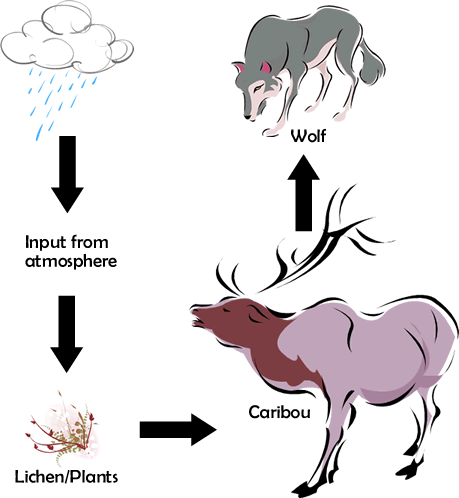Main Project Contact:
Sharon Katz
Project Start Date:
2008
Project End Date:
2010
Project Name:
Bioaccumulation of Perfluorinated Compounds in the Vegetation-Caribou-Wolf Food Chain - Traditional Knowledge
Overview:
This project aims to look at bio-accumulation of perfluorinated compounds (PFCs) in a northern food-chain: vegetation – caribou- wolves. These compounds are emerging contaminants of concern in the Arctic, and they have been found in relatively high concentrations in caribou from the Canadian north.
Objectives:
The objective of this study are to determine whether PFCs bioaccumulate using the vegetation-caribou-wolf food chain and the Bathurst caribou herd as a model.

Location:
North Slave Region, NT
Methods:
The study design involved collection of vegetation samples from the range of the Bathurst caribou herd. This included ground-dwelling lichens, moss, willow and grasses to give a fair model of caribou diet. Animal livers, kidney, muscle, bone, and incisors were collected from 20 Bathurst caribou and 10 wolves from the Bathurst region. Samples were frozen and shipped to Whitehorse for processing and analysis.
Schedule:
| TASK | DATE |
| Field work in Ft. McPherson | January 2009 - December 2009 |
| Field work close to Darling Lake, Gordon Lake, Snap Lake, Contwoyto Lake, and Tibbit Lake | August 2009 - December 2009 |
| Sample Analysis | January 2010 |
Findings:
Our results show that PFCs do bioaccumulate in this food chain. Highest PFC concentrations were found in the liver of wolves. The liver concentrations of caribous showed a similar pattern with approximately two to three times lower concentrations. High Levels were found in lichens, and only minor amounts were found in the other two plant types, willow (Salixspp.) and cotton grass (Eriophorum spp.).
External Partners:
Gwich'in Social and Cultural Insitute
Tr'ondëk Hwëch'in First Nation
Vuntut Gwitchin First Nation
Additional Resources:
Traditional knowledge collected through elder interviews for this project shows the strength of the vegetation – caribou-wolf food chain, and provided a wealth of information about the interrelatedness of caribou and wolves. Click here for a .pdf of the final report.
